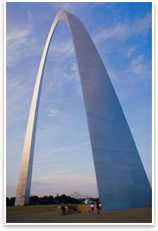Patricia Lancaster, FAIA, Resigns as New York City Building Commissioner
An architect leaves the Department of Buildings post—will she be the last one?
Patricia Lancaster, the widely praised head of New York City’s Department of Buildings, resigned on April 22. This change comes after a spike in construction site deaths and allleged errors in departmental oversight. Lancaster’s supporters say she’s been the head of an underfunded and understaffed agency that nevertheless managed to reform the city’s building codes and improve the department. Mayor Bloomberg’s administration is beginning discussions with the City Council about removing the requirement that the buildings commissioner be an architect or an engineer.
 From AIA President Marshall Purnell, FAIA: A Diverse Profession Is Sustainable From AIA President Marshall Purnell, FAIA: A Diverse Profession Is Sustainable
Recognizing the AIA Diversity Plenary Conference in St. Louis April 14–16, President Purnell concludes that now is the time for understanding the value of diversity in the profession and taking action to create a profession that reflects today’s diverse U.S. population. Read his remarks or watch the video.
AIA-Backed Green Housing Bill Unveiled on Earth Day by Rep. Perlmutter
Commemorating Earth Day, Rep. Ed Perlmutter (D-Colo.) on April 22 outlined details of the comprehensive legislation aimed at promoting energy efficiency in residential buildings that he plans to introduce shortly. Delivering the keynote address at the Center for American Progress forum in Washington, D.C., Perlmutter explained how the bill—on which the AIA’s federal relations department consulted extensively—would provide incentives to lenders and financial institutions to provide lower interest loans and other benefits to consumers who build, buy, or remodel their homes and businesses to improve their energy efficiency. 
 ‘Bird’s Nest’ Olympic National Stadium Opens in Beijing ‘Bird’s Nest’ Olympic National Stadium Opens in Beijing
National Stadium, the centerpiece for the 2008 Beijing Olympics, opened for its first sports event on April 18. The stadium, designed by the consortium of engineers Arup, Herzog & De Meuron architects, and China Architecture Design & Research Group, is adjacent to another Olympic landmark, the so-called “Water Cube” aquatic center (also designed by Arup). The 91,000-seat stadium will serve as the site for the opening and closing ceremonies of this summer’s Olympic Games, as well as the track and field athletic events. Nicknamed “The Bird’s Nest,” the stadium gets its spectators as close to the action as possible with clear sightlines and still allows for an additional 11, 000 temporary seats during the games. The random-appearing steel roof structure wraps around the seating bowl and, according to the designer “follows a complex set of rules” that defined its geometry and made it buildable. Arup also employed advanced computer modeling and analysis to assure that the stadium will be able to withstand major earthquakes, as Beijing sits in one of the world’s most seismically active zones. Arup Project Director Michael Kwok said in a press release: “The lasting legacy of this stadium will be more than just a sporting venue. The Bird’s Nest is a temple for China’s people, a place to visit and photograph, and a reason to stay in Beijing for an extra day.” 
|

 From AIA President Marshall Purnell, FAIA: A Diverse Profession Is Sustainable
From AIA President Marshall Purnell, FAIA: A Diverse Profession Is Sustainable ‘Bird’s Nest’ Olympic National Stadium Opens in Beijing
‘Bird’s Nest’ Olympic National Stadium Opens in Beijing